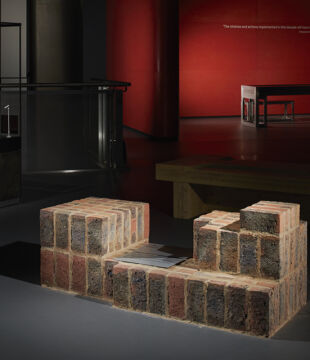
Details
Project Country: Belgium
Brick Manufacturer: Wienerberger Limited
Architects: C+S Architects / Carlo Cappai / Maria Alessandra Segantini
Brickwork Contractor: Dyls
About the project
Commissioned by developer Dyls and supported by the city of Aarschot, the site of the former wine merchant Geens has been redesigned by an international team of architects since 2013.
Public space is the backbone of the masterplan design, a bridge between the city centre and the landscape. Following the client’s brief, the design works out the plot’s edges: the connection with the old city centre on one side (Snake Building) and, oppositely, that with the steep landscape where the old Orlean tower sits (7 blocks).
Designing the Snake Building, the Architects worked to enlarge the dimension of the public space, designed to be fully accessible to all people. In plan, the building folds to enlarge the square, also empowering the community identity as it visually connects to the old Orlean Tower.
In section, the Architects erode the compact brick volume through the insertion of a series of terraces, cut on the roof (beloved by the client, especially after Covid) which formally capture the beauty of the ‘dance of the roofs’ of the Medieval Belgian cities and translate them in contemporary forms and materiality. The volume is monochrome and designed with black brick cladding and black clay roof tiles.
The non-linear form of the building and its continuity to the urban context (the heritage city) seeks to be defined by material and construction techniques that are, at the same time, traditional and innovative. The Architects investigated the local construction techniques and the choice of materiality was dictated to empower the local knowledge and skills of the Belgian constructors, who were successfully challenged by the forms of the building, confirming brick construction as one rich in potential, flexible and able to bridge the old and the new. The Architects felt enjoyment from the brick builders in managing the challenge successfully. Innovation is here interpreted as the appliance of a traditional construction technique in a new form. The chosen bricks have been designed to overcome the challenges of the folding surfaces. Joints are recessed and the mortar is similar in colour.
The roof cladding is designed similarly (with the use of clay roof tiles) minimising the detail joining the façade and the roof in the aim to reinforce the power of the volume. While black clay (roof tiles and bricks) is the material taking care of the urban scale, the building is also a kind of sculpture that we inhabit and so, when touched by the body, the material is turned into a softer one: wood.
Wood windows, striped-wood entrance halls, and terrace facades add a warmer layer to the scale of the human body. Striped wood panels are extended to the height of the roof participating in their dance, showing a sort of ’warmer dress of inhabitation’.
The Architects believe in the power of materials to connect the buildings to the different scales that the project embraces, from the urban to the body. Our design aims to be inter-scalar. Materiality and detailing as a tool to empower this potential of design through innovation.
Sponsored by Kingscourt Country Manor Bricks

















